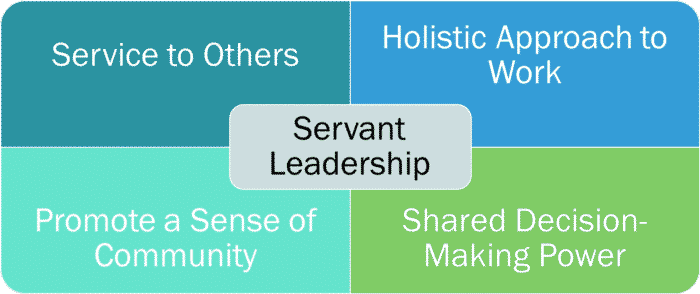Is the Scrum Master just carrying food and water? — Part 1
The controversial term of the Servant Leader (Leader as a servant) includes a whole philosophy. Its founder, Robert K. Greenleaf, after decades of working in management, development, and education studies, has come to the conclusion that traditional leadership does not meet the needs of an evolving society. He believes that the Servant Leader approach could help increase productivity and efficiency at all levels.
Valeria Chiriac is a Scrum Master in one of the most dynamic business lines of AROBS, the Travel & Hospitality solutions area of expertise and she loves to write about technology.
He focused on the answer to the question: “The people guided by a servant leader become wiser, more autonomous, and even more — does this approach grow their chances of becoming servant leaders themselves?”
When the leader changes the perspective of leading with serving, both the organization and its employees win. While employees develop certain abilities and satisfy their need for affirmation, the organization grows, because they become devoted to and involved in the entity.
Since 1958, since the inception of the concept, more organizations have adopted this approach. Corporations such as Google, Facebook, Yahoo, Microsoft, Nokia, Siemens, CNN, BBC have implemented a system that favours this way of leading.
Servant leader as seen in Romania
In Romania and especially in Cluj-Napoca, more companies (most of them in software services) are turning to this concept using certain management methodologies such as Scrum, Kanban, Spotify, SAFe. All these technologies are based on the presence of a servant leader, whatever the name: Scrum Master, Agile Coach, Servant Leader.
The term is quite new in Romanian culture, so there are some discrepancies or misunderstandings about it. Often, when discussing Servant Leader or Scrum Master, many people’s expressions include: “Carry food and water”, “Scrum Master’s responsibility to help the team to remove impediments,” “Protects the team from interruptions, deviations or requests from the external environment “. Indeed, these responsibilities are on the to-do list of a Servant Leader or a Scrum Master. But more than that, one of the most important activities in this list is to help the team reach the level of maturity. What happens when, due to routine, high workflow or other reasons, the Servant Leader is more perceived as an effective source in solving all team problems and not as the person who will help the team grow up?
Still, what does it mean to be a servant leader? There are so many definitions, approaches, and perspectives, but at the basis of this conversation, this kind of leader will focus on growing up the team and its welfare. Unlike the traditional leader, which sometimes involves the exercise of power from the top of the hierarchy to the subordinates, the servant leader descends on the horizontal line, managing to “share” that (often informal) power with the team members. Moreover, it prioritizes the needs of team members and helps them develop professionally in such a way as to achieve the highest level of performance in a shorter amount of time.
The mature team features
- Team members actively collaborate and organize themselves for better functioning without considering their role in the team or the title held in the work contract.
- Team members can make decisions about how to work, implement and deliver the final product, in accordance with the requirements of the Product Owner
- Team members are convinced that they can solve any problem as a team.
- Each member will work in achieving common success, in addition to achieving its own success.
- Membership collaboration is based on trust, openness. Not fear or anger.
- Team members are in continuous and constructive disagreement.
- These are of decisive importance when the servant leader must choose whether to solve or not an issue instead of a team member.
Let us make a short mind gymnastic exercise: If this leader ever helps a member without showing him how to solve the problem, will the helper be interested in finding solutions next time to stop using help?
Not really, and the lack of the openness needed for trying to solve a situation that hinders the team activity will lead to a lower sense of teamwork, a low degree of autonomy, a lack of commitment to the success of the team. Therefore, the maturing process of the team will be delayed.
Dare to try the AROBS experience!
Read our recent blog posts





